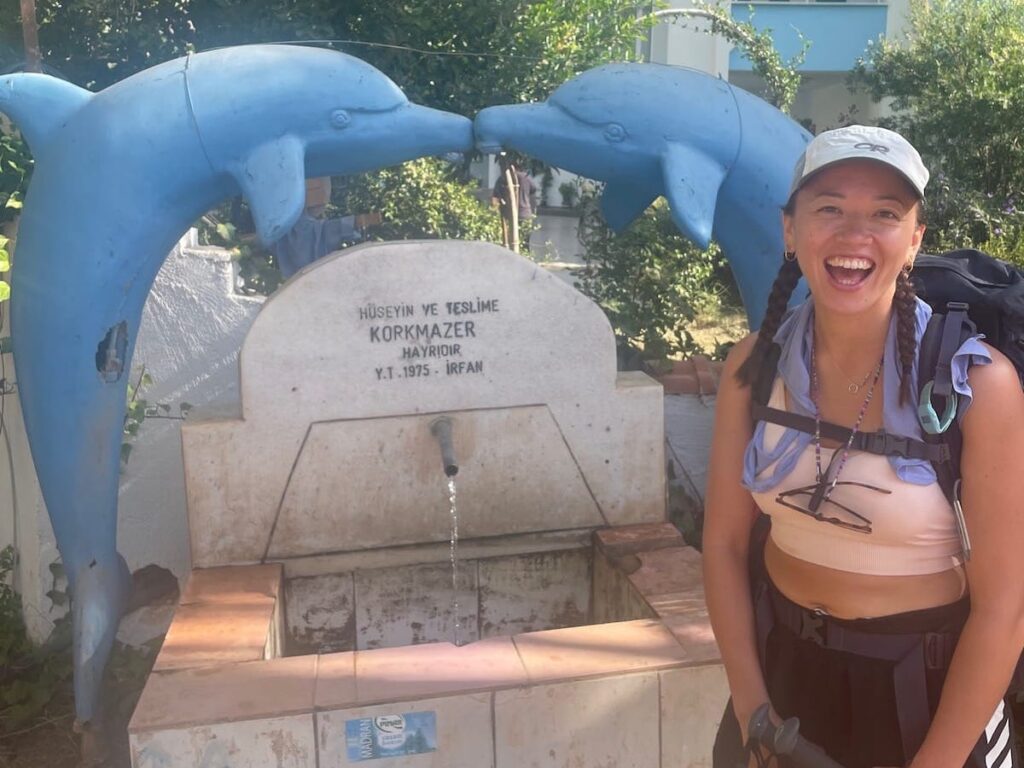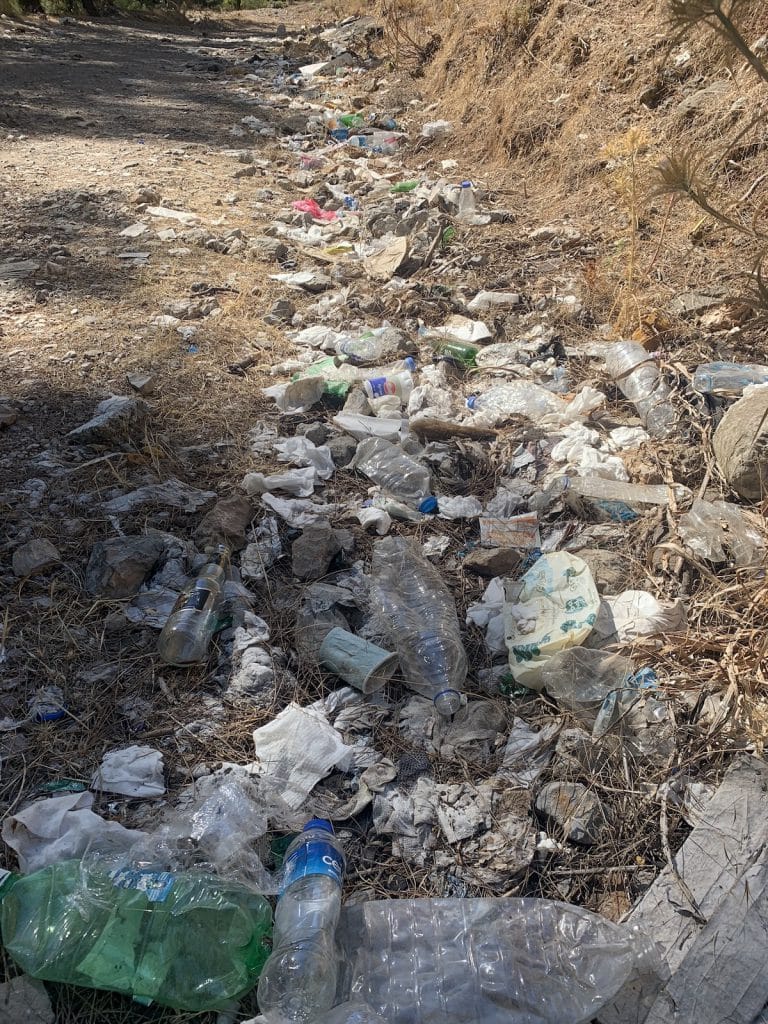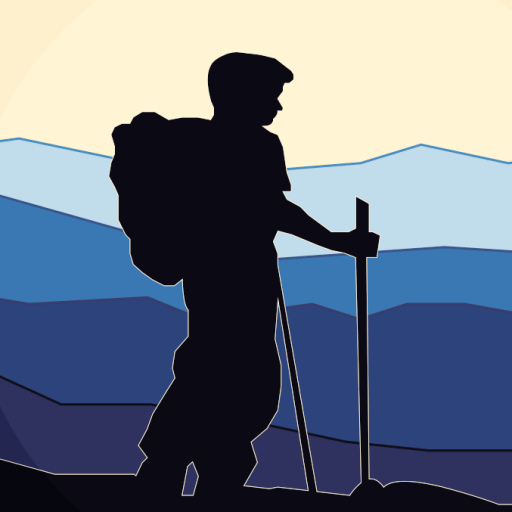
Your humble author is most definitely not an expert on municipal water supplies and water safety issues, so take the following comments with a grain of salt. They represent personal experience and feedback from many walkers of the Lycian Way.
For a more official opinion, check your embassy’s travel advisories for southern Turkey.
For a more official opinion, check your embassy’s travel advisories for southern Turkey.
Tap Water
In general, Turkish tap water is clean and drinkable. Municipal water supplies are operated to good standards. Most people are no more likely to get sick drinking Turkish tap water than they would anywhere else they travel.
However, that doesn’t mean you won’t get sick. Simply being exposed to different microbes in the water than you are used to (yes, your home supply of water also has microbes) can make you stomach sick until you adjust to them. Just travelling around your own country can cause problems for your stomach. Turkey is no different.
Assuming you are not going to rely entirely on bottled water during your trip, my non-professional, personal experience recommendation is to drink some tap water right at the start and let your stomach adjust. If you are going to have stomach problems, get it out of the way right at the beginning before you start on the trail.
However, that doesn’t mean you won’t get sick. Simply being exposed to different microbes in the water than you are used to (yes, your home supply of water also has microbes) can make you stomach sick until you adjust to them. Just travelling around your own country can cause problems for your stomach. Turkey is no different.
Assuming you are not going to rely entirely on bottled water during your trip, my non-professional, personal experience recommendation is to drink some tap water right at the start and let your stomach adjust. If you are going to have stomach problems, get it out of the way right at the beginning before you start on the trail.
Wells, Cisterns, & Village Fountains

Hiker drinking from cistern between Ovacık and Faralya. Photo by Ronen Fox, spring 2017.
Sometimes village fountains are hooked up to a standard municipal water supply and thus are the same as tap water. However, often village fountains are drawn from natural (untreated) water sources, just like wells and cisterns. On rare occasions, there will be signage indicating whether it is treated water or (essentially) well water. Usually, though, you simply won’t know. Even the locals often don’t know.
If you are concerned, handle village fountains as if they were untreated water.
Locals drink from wells, cisterns, and untreated village fountains without filtration (usually). But their stomachs are used to it. If your stomach is sensitive, you might want to filter it before drinking.
If you are concerned, handle village fountains as if they were untreated water.
Locals drink from wells, cisterns, and untreated village fountains without filtration (usually). But their stomachs are used to it. If your stomach is sensitive, you might want to filter it before drinking.

Looking inside a dirty cistern. Photo by T Roszkowski, fall 2022.
Note that unlike tap water and village fountains, wells and cisterns can also be outright dirty (as in polluted). You’ll often see all sorts of garbage floating in wells and cisterns. There is an additional consideration: wells and cisterns are typically standing water, which is more likely to be contaminated.
Extensive spiderwebs over much of the inside of a well is also not at all unusual, especially on the more remote wells.
Note that wells and cisterns usually require a bucket and rope to get the water. Sometimes you’ll find them at the water source, but often you won’t. Carrying a roll of thin twine and a cup (with looped handle) is usually enough to draw water to fill your bottle when needed.
Extensive spiderwebs over much of the inside of a well is also not at all unusual, especially on the more remote wells.
Note that wells and cisterns usually require a bucket and rope to get the water. Sometimes you’ll find them at the water source, but often you won’t. Carrying a roll of thin twine and a cup (with looped handle) is usually enough to draw water to fill your bottle when needed.
Streams, Springs, and Trail-Side Fountains
Fresh, cold stream and spring water is always nice. Many of the water sources we list are spring water. These water sources are typically flowing water, so you don’t have the same degree of contamination issues that you have with stagnant water (like in a cistern).
However, one important consideration is giardia-type parasites. These are an issue anywhere in the world when drinking natural, ‘wilderness’ sources of water, so this isn’t specific to Turkey. Many people ignore the risk and routinely drink from streams and springs, usually with absolutely no ill effect. Some do get sick, though. If you are at all concerned, filter such water before drinking it.
You’ll come across many fountains alongside the trail. Most are simple and plain, like this one:
However, one important consideration is giardia-type parasites. These are an issue anywhere in the world when drinking natural, ‘wilderness’ sources of water, so this isn’t specific to Turkey. Many people ignore the risk and routinely drink from streams and springs, usually with absolutely no ill effect. Some do get sick, though. If you are at all concerned, filter such water before drinking it.
You’ll come across many fountains alongside the trail. Most are simple and plain, like this one:

Typical trail-side fountain, between Fethiye and Kayaköy. Photo by Ronen Fox, Spring 2017.
Others are more elaborate and might have a rest area with them, such as:

More elaborate than average fountain, with benches / table and protection from the sun and rain between Gökceören and the Phellos ruins. Photo by Susanne Rieder, Nov. 2022.
Unless signage indicates otherwise, it is best to assume all of these are untreated water, typically fed from a well or spring.
Bottled Water
Bottled water is widely available. If you prefer, you can load up on bottled water before each day’s walk from the local market. On many stages of the Lycian Way you’ll pass through villages where you’ll often be able to purchase additional bottles of water. Remotely-located guesthouses also often have water bottles available for sale (including to passing-by hikers).
Please keep in mind, though, that water bottles are an environmental eyesore. They are everywhere these days, littering trails, floating in wells, caught up in stream beds… Please don’t toss them along the trail when you empty one. Carry it out and dispose of it properly. Overall, the Lycian Way is a clean, unspoiled, and beautiful trail. But there are places, typically where casual tourists can reach, that look more like this:
Please keep in mind, though, that water bottles are an environmental eyesore. They are everywhere these days, littering trails, floating in wells, caught up in stream beds… Please don’t toss them along the trail when you empty one. Carry it out and dispose of it properly. Overall, the Lycian Way is a clean, unspoiled, and beautiful trail. But there are places, typically where casual tourists can reach, that look more like this:

Garbage by trail near Fethiye. Photo by Rebecca Scheer, fall 2022.
Ideally, minimize how many bottles of water you use. Consider buying less and topping them up from fountains and springs along the way.
My Personal Approach
As noted above, I’m no expert on the subject but since I get asked about it frequently here’s my own personal approach to water:
– Always filter water from wells and cisterns, even if it looks clean. Where possible, though, I simply avoid both wells and cisterns except when I am concerned about running low.
– Usually (but not always) filter water from springs and streams. I should always filter it but sometimes I’m lazy or just plain forget (shame! shame!). My stomach is pretty tolerant of different microbes, so I tend to be able to get away with this.
– Sometimes filter water from taps in remote mountain villages. But I mostly don’t even though I probably should.
– Usually drink tap water as-is from towns / cities, though as with anywhere keep in mind that old, poorly maintained buildings are more likely to have low-quality pipes, so always use your judgement.
Typically, I estimate my ‘base’ water needs for the day based on total distance and the overall elevation gain / loss. I then tweak the ‘base’ estimate based on the ruggedness of the terrain and expected temperature for the day. Then I check where water sources should be available and how reliable those sources are supposed to be. I might increase or reduce my water estimate based on what I know about the water sources in the area (recent feedback reports, for example).
Lastly, I evaluate how much risk is involved. For example, there’s higher risk if there are fewer villages along the way or if I’m going to be in very remote territory or if I’m hiking alone, and so on. Risk affects how much water I will carry above my actual estimate.
– Always filter water from wells and cisterns, even if it looks clean. Where possible, though, I simply avoid both wells and cisterns except when I am concerned about running low.
– Usually (but not always) filter water from springs and streams. I should always filter it but sometimes I’m lazy or just plain forget (shame! shame!). My stomach is pretty tolerant of different microbes, so I tend to be able to get away with this.
– Sometimes filter water from taps in remote mountain villages. But I mostly don’t even though I probably should.
– Usually drink tap water as-is from towns / cities, though as with anywhere keep in mind that old, poorly maintained buildings are more likely to have low-quality pipes, so always use your judgement.
Typically, I estimate my ‘base’ water needs for the day based on total distance and the overall elevation gain / loss. I then tweak the ‘base’ estimate based on the ruggedness of the terrain and expected temperature for the day. Then I check where water sources should be available and how reliable those sources are supposed to be. I might increase or reduce my water estimate based on what I know about the water sources in the area (recent feedback reports, for example).
Lastly, I evaluate how much risk is involved. For example, there’s higher risk if there are fewer villages along the way or if I’m going to be in very remote territory or if I’m hiking alone, and so on. Risk affects how much water I will carry above my actual estimate.
Error on the Side of Safety
Remember: Water is generally not a problem on the Lycian Way. There are lots of water sources. However, many parts of the Lycian Way are in remote areas that sometimes *do* go dry. You cannot rely on such sources being available all year. It can be deadly to underestimate your water needs. Keep in mind that sometimes even short stretches can be challenging if the weather is hot and the terrain is rocky and/or hilly. Water consumption can be much, much higher than expected.
Nobody wants to carry more water than they absolutely have to, but plan conservatively. Some mistakes you only get to make once.
Nobody wants to carry more water than they absolutely have to, but plan conservatively. Some mistakes you only get to make once.
Water Reports
The availability of water sources, their state / condition, and so on, changes regularly. Some water sources are only reliable at certain times of the year, some sources are affected by construction, and some are available but polluted.
With the generous help of lots of other hikers, we actively track many, many water sources along the Lycian Way, including for each its location, the type of water source (fountain, well, etc.), whether water is available / flowing, how clean it is, the availability of a bucket and rope (where needed), and so on.
You can help by submitting your own water reports for each source, based on your own observations. Let us know when you were there and what the state of the source was (flowing, clean / dirty, bucket available, etc.). And include a photo if possible (ideally with geo-location enabled when you take the photos as that will give us the coordinates as part of the photo’s metadata).
You can submit such reports either by using the ‘feedback’ feature of the website page we’ve created for that source (if already available on our site) or you can send us an email with the details.
Tip: if you are using our GPS waypoints, you can use the email links inserted in each waypoint to generate feedback emails even while offline (no internet connection). Those email links have the ID of the water source (or restaurant, guesthouse, etc.) pre-inserted so we’ll know what it is you are submitting feedback about. Thus, when you reach a water fountain, just tap the waypoint on your smartphone app, tap the email link, and then enter a few words (‘clean and flowing’, for example), snap and attach a photo if possible, and hit ‘send’. Even if you are offline (no Internet connection), your email app will simply hold all feedback emails until you do have a connection.
We’ll include a representative selection of the feedback on this site and we track all reports in our internal database. Thanks in advance for helping!
While hiking, you can access such reports made by others by either searching for the water source on our site or (recommended) using the link for that source that is part of our water source GPS waypoints. Thus, when you are looking at the waypoint for that water source on your smartphone app, you can tap the link to directly open the web page for that water source. We recommend making it a habit to review each morning the potential water sources for that day’s hike (since you won’t always have an Internet connection while out on the trail itself).
Hopefully the above info helps with your own water planning.
With the generous help of lots of other hikers, we actively track many, many water sources along the Lycian Way, including for each its location, the type of water source (fountain, well, etc.), whether water is available / flowing, how clean it is, the availability of a bucket and rope (where needed), and so on.
You can help by submitting your own water reports for each source, based on your own observations. Let us know when you were there and what the state of the source was (flowing, clean / dirty, bucket available, etc.). And include a photo if possible (ideally with geo-location enabled when you take the photos as that will give us the coordinates as part of the photo’s metadata).
You can submit such reports either by using the ‘feedback’ feature of the website page we’ve created for that source (if already available on our site) or you can send us an email with the details.
Tip: if you are using our GPS waypoints, you can use the email links inserted in each waypoint to generate feedback emails even while offline (no internet connection). Those email links have the ID of the water source (or restaurant, guesthouse, etc.) pre-inserted so we’ll know what it is you are submitting feedback about. Thus, when you reach a water fountain, just tap the waypoint on your smartphone app, tap the email link, and then enter a few words (‘clean and flowing’, for example), snap and attach a photo if possible, and hit ‘send’. Even if you are offline (no Internet connection), your email app will simply hold all feedback emails until you do have a connection.
We’ll include a representative selection of the feedback on this site and we track all reports in our internal database. Thanks in advance for helping!
While hiking, you can access such reports made by others by either searching for the water source on our site or (recommended) using the link for that source that is part of our water source GPS waypoints. Thus, when you are looking at the waypoint for that water source on your smartphone app, you can tap the link to directly open the web page for that water source. We recommend making it a habit to review each morning the potential water sources for that day’s hike (since you won’t always have an Internet connection while out on the trail itself).
Hopefully the above info helps with your own water planning.
